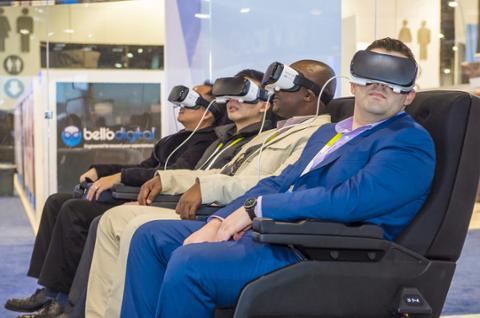Using Virtual Avatars to Create Real Empathy
We have reached a point where computers are needed to make our medical providers act more human. A new venture from Madison, WI-based Medical Cyberworlds has worked on such a product for the past decade, and is about to roll out a production version called MPathic-VR. Several medical and nursing schools will use it to train their future professionals. Many doctors aren’t what you would call empathetic caregivers. I still remember one specialist that I went to several years ago. I had done a lot of Internet research to find him, and booked an appointment months in advance. When he came into the exam room, he stood with his hand on the doorknob while I described my symptoms. Needless to say, that was my first and last visit. To prevent those sorts of situations, the idea is to use virtual reality techniques and programs to help train doctors to deal with health emergencies and other clinical care situations. The MPathic-VR system covers a wide range of situations and real-world behaviors that are typical in a clinical situation. A med student or nurse talks with a simulated avatar in a face-to-face conversation; as they converse, the student must interpret the avatar’s verbal and non-verbal cues and respond. These interactions are all recorded and graded on the effectiveness of the student’s communication with the virtual patient. “We have a very narrow focus,” said Dr. Fred Kron, the CEO and founder of the company. “We are interested in what happens when you are behind closed doors with your medical provider in an examination room. Our goal is to have a very believable interaction with our programmable virtual patients.” The idea, he added “is to make this situation acceptable to medical students and teachers because it is totally immersive. We want our future doctors to see why communication is so important and develop their skills to perform in difficult situations.” The real situation is quite literally life and death. “In most of medical encounters, nearly 80 percent of the visit involves your discussion with your doctor. When information doesn’t get shared, people will get hurt and in some cases die,” Kron said. Poor doctor-patient communication claims thousands of lives each year. Add in the billions of dollars in malpractice lawsuits stemming from these deaths. Given these stakes, one approach is to provide intensive in-person training by clinicians to teach doctors how to communicate better with their patients. This has led to efforts such as Onctotalk from the University of Washington, which focuses on cancer patients. But this is very time- and labor-intensive, and specific to that particular medical specialty. And so the idea of virtual patient training comes into play. Given the potential upside, it isn’t surprising that the idea has been around for many years. Almost a decade ago, there was a special issue of the Yale Medicine Alumni magazine that described a number of aspects of the virtual patient, including empathic training. Another decade-old paper in a scientific journal described how tracking eye movement could be used to monitor a user's attention and interests, and to personalize the agent behaviors. This series of virtual patients has been in use at Dartmouth’s medical schools for several years. “Researchers are working on machines that can understand not only the content of human speech, but also the emotion,” Hong Kong University professor Pascale Fung wrote in a blog post from last year. “One day machines will recognize emotions as efficiently as they do speech.” But these are more academic efforts: Kron’s company is the first in trying to sell virtual patient services on the open market. He is working with the University of Michigan and two other med schools at the moment, and has seen interest from 20 other medical and nursing schools to purchase his system. He got the idea for his software after he survived a bout with cancer, at a time when Second Life was a big thing: “Back then, everyone wanted to have one’s own virtual real estate.” He began researching how facial expressions drive communication and particularly how doctors are trained to listen to what their patients are telling them.


